Speedrun Learning
How AI can enable a new way of learning
Thank you for being here. Please consider supporting my work by sharing my writing with a friend or taking out a paid subscription.

If there was one thing I learned during my linear algebra class with Joel Tropp at Caltech, it’s that linear algebra is all about basis functions and the power of performing transformations between them. I didn’t do particularly well in my math classes at Caltech, but I did get the big picture intuition about linear algebra thanks to Joel: solving problems in one basis can be painful and slow. Transforming them to another basis can make the computation almost trivial. The basis matters. A lot.
GenAI has enabled the equivalent of a change of basis in education. GenAI enables you to reformulate the challenge of learning. This new way of learning enables you to get across the surface of the water without sinking. Then you go back later to fill in the details.
Even if you don’t know it, you know about basis functions. Basis functions are famous in compression algorithms. A change of basis using a discrete cosine transform is at the core of the JPEG image format. The basic idea is that you take an image, which is naturally represented as a series of pixels with values to represent the brightness of those pixels, and then express it instead in a series of weighted cosine functions. If you’re curious, you can learn more about the cool math behind the JPEG compression algorithm.
This change of basis using the discrete cosine transform enables something very useful called progressive rendering. You’re certainly familiar with progressive rendering. This is what happens when your photo app loads a low-resolution version of the photo. When it first loads, it’s blurry and the fine details are missing, but you can see the whole image at once. Then, as the photo continues to load, the finer details come into focus until the whole image displays sharply.
This method of progressive rendering is in contrast to the more naïve way of loading an image, called baseline loading. In baseline loading, images are loaded using a raster scan, filling in the image one pixel at a time, starting at the top left corner and going down to the bottom right, row by row. Both scenarios can represent exactly the same data (assuming that one keeps all the terms of the discrete cosine transform), but the way that you represent the data has a significant impact on the way that we experience it.
Baseline vs. Progressive Rendering and Learning
What does this all have to do with learning and education? Traditionally, we think of learning as akin to the baseline method. We build up our expertise sequentially, one block at a time. But genAI can enable us to learn using progressive rendering. GenAI enables us to render a low-resolution image of the full concept and then go back to fill in the details.
In education, most of the time we teach new skills by having someone model it. You’ve seen your most effective teachers do this. These teachers not only explain the principles in abstract terms, but they also break the ideas down into digestible pieces. First, they lay out the plan and ask questions to make sure you understand the roadmap. Then they walk you through the problem, allowing you to look over their shoulder as they analyze the problem and devise a plan of attack. This is a baseline rendering approach.
This approach of coaching through a baseline, step-by-step method works because it enables you to see the problem from a perspective that you haven’t yet developed, namely that of an expert. It’s a way of allowing you to be the copilot, along for the ride, while you watch the action happen. This is needed because when you are a novice at something, you don’t know all the steps to get from the beginning to end. To make it there, you need a guide. You can’t easily move from step to step on your own.
AI Enables Speedrun Learning
So what does AI have to do with all of this?
My thesis is that in a world where AI is everywhere, it is easier than ever to make ideas concrete. One of the ways that AI has been useful in my own work is by helping me push through the barriers that would so often trip me up in the past. In coding projects, this is often some library that you need to use or a specific detail needed to deploy your code or app. If you’re building a new circuit or trying to fix some plumbing in your house, you’re sure to encounter a question that will halt your forward progress.
It’s not that this problem was unsolvable in a pre-genAI world. You could find the information to get unstuck in a book, a Google search, or a YouTube video. But in each of these situations, you would get out of the flow of building. You had to stop, find the next thing, synthesize the information you learned, and then apply it to your problem.
In the world of generative AI, all of these paths are still open to you, but a genAI coding tool like Claude Code or Codex can help to brush over the parts in the process that I may not quite know how to do. They pull in the information you need and apply it directly to the context of your project. If you’re coding, Claude has access to your codebase. It can translate the ideas from that StackOverflow thread or the documentation using the variables in your code.
At this point, you might be asking, “Wait, isn’t expertise in the nitty-gritty details important?! Josh, didn’t you literally write about this exact topic last week?” The answer is, yes, of course. As I wrote last week, rare and valuable skills (aka, true expertise) will always be needed in order to carve out a meaningful and fulfilling career. It isn’t enough to just know how to write effective prompts.
And yet, I’m convinced that genAI is enabling a truly new way to learn. Instead of building step-by-step, concept-by-concept, genAI allows you to speedrun the learning process. It gives you enough speed so that you can run across the water without sinking. This new way of learning, what I’m calling speedrun learning, is a way of painting the broad strokes before you fill in the details. You go from 0 to 1 in 8-bit resolution and then go back to increase the fidelity. It’s progressive rendering applied to learning.
If my own personal experience with speedrun learning is any indication, we’re entering an era where it’s going to be easier (and more fun) than ever to be a builder with some imagination. The distance between 0 and 1 has never been smaller. It’s never been easier to close the gap between idea and prototype. Deep learning and expertise will still matter (and always will), but the problem has been expressed in a new set of basis vectors. Not every set of basis vectors is created equal.
Got a thought? Leave a comment below.
Reading Recommendations
writes on the blog about Builders, Solvers and Cynics. In a decidedly pro-builder take—this is Andreesen Horowitz, after all—Alex unpacks what he sees as the philosophical roots of a certain type of anti-tech sentiment. Worth reading, even if you strongly disagree.In a piece from a little over a year ago,
writes about the moral hazards of AI. argues that higher education is sleepwalking toward obsolescence. He’s got a point. He argues for a better way forward. Strong agree.asks “where’s all the AI shovelware?” Based on an analysis of his own use of AI tools to “assist” him with his programming, he hypothesizes that the reason we’re not seeing an explosion of new software is that AI isn’t actually making programmers more effective. He writes:The Only Way Forward: Rebuild the University Around What AI Can’t Do
We must re-center college around what is irreducibly human. We must provide an education that is:
Relationship-rich—where faculty actually know their students and students cannot hide from intellectual accountability.
Apprenticeship-based—centered on inquiry, judgment, interpretation, and iteration, not information transfer.
Demonstrated learning--understanding that must be spoken, defended, and tested in real time.
My argument: If so many developers are so extraordinarily productive using these tools, where is the flood of shovelware? We should be seeing apps of all shapes and sizes, video games, new websites, mobile apps, software-as-a-service apps — we should be drowning in choice. We should be in the middle of an indie software revolution. We should be seeing 10,000 Tetris clones on Steam.
I won’t speak for anyone but myself, but I will tell you that I’m personally finding that AI is enabling me to create lots of apps, big and small, in hours/days that would have taken me weeks or months before.
The Book Nook
Still making my way through Postman, still highly recommending you pick it up if you haven’t already.
Any education that is mainly about economic utility is far too limited to be useful, and, in any case, so diminishes the world that it mocks one’s humanity. At the very least, it diminishes the idea of what a good learner is.
Postman preaching (with sarcasm):
The technology is here or will be; we must use it because it is there; we will become the kind of people the technology requires us to be; and, whether we like it or not, we will remake our institutions to accommodate the technology. All of this must happen because it is good for us, but in any case, we have no choice.
He just gets it (emphasis mine).
In the second place, what we needed to know about cars—as we need to know about computers, television, and other important technologies—is not how to use them but how they use us. In the case of cars, what we needed to think about in the early twentieth century was not how to drive them but what they would do to our air, our landscape, our social relations, our family life, and our cities. Suppose that in 1946, we had started to address similar questions about television: What would be its effects on our political institutions, our psychic habits, our children, our religious conceptions, our economy? Wouldn’t we be better positioned today to control television’s massive assault on American culture?
The Professor Is In
Last Friday, proposals were due for this year’s Innovation Accelerator call at Harvey Mudd. This year’s request for proposals was specifically focused on AI, so I’m sure it will not surprise you to hear that I was on not just one, but two different pitches. More to come soon…
Leisure Line
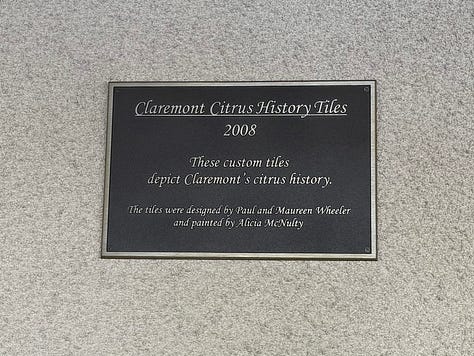
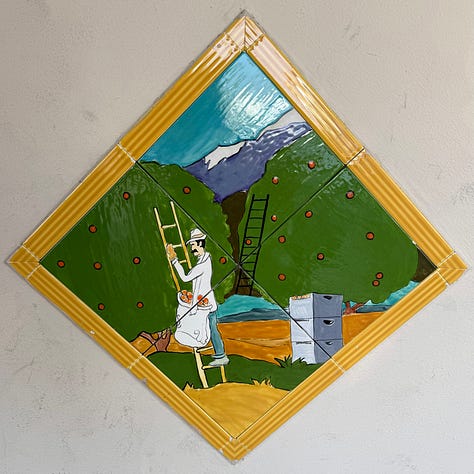
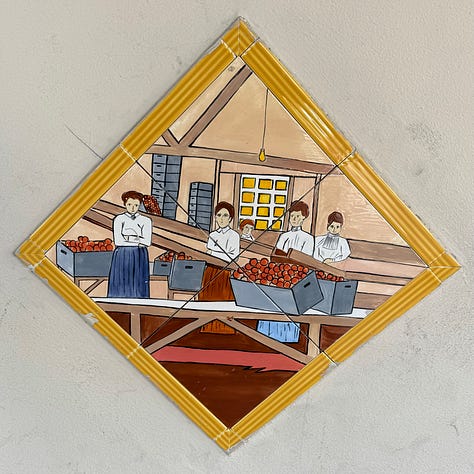
Noticed this plaque and these cool custom tiles outside our Trader Joe’s in Claremont. I love these little splashes of art. This week, I’ll have to try to get a photo of some of the painted transformer boxes around town.
Still Life
I was biking home from the kids’ swimming lesson yesterday and encountered this beautiful view of the evening sky.


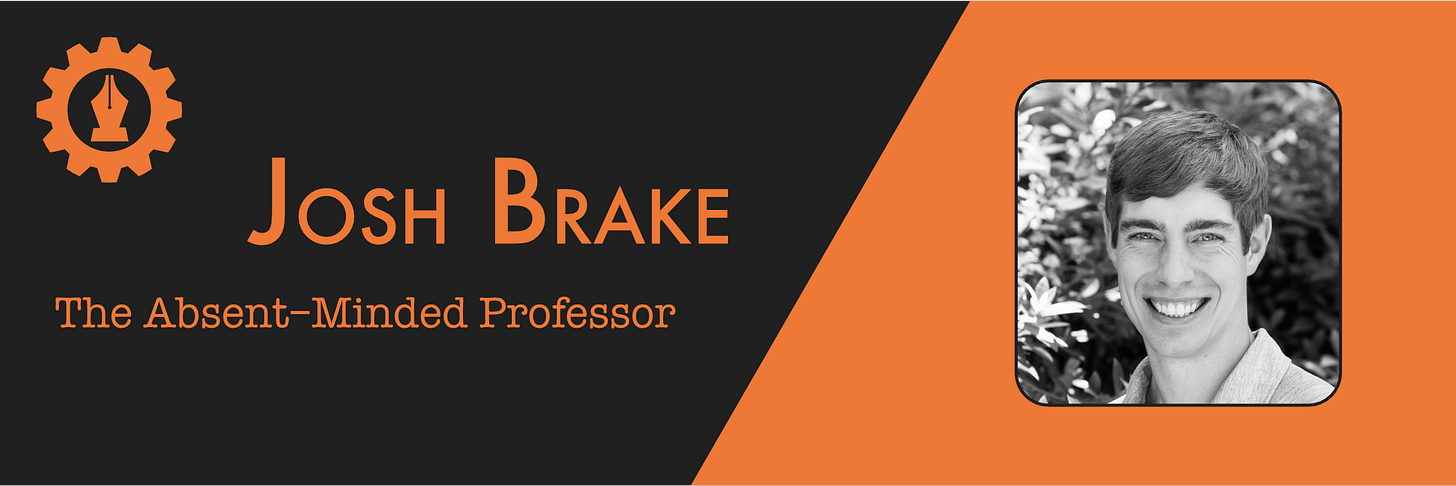

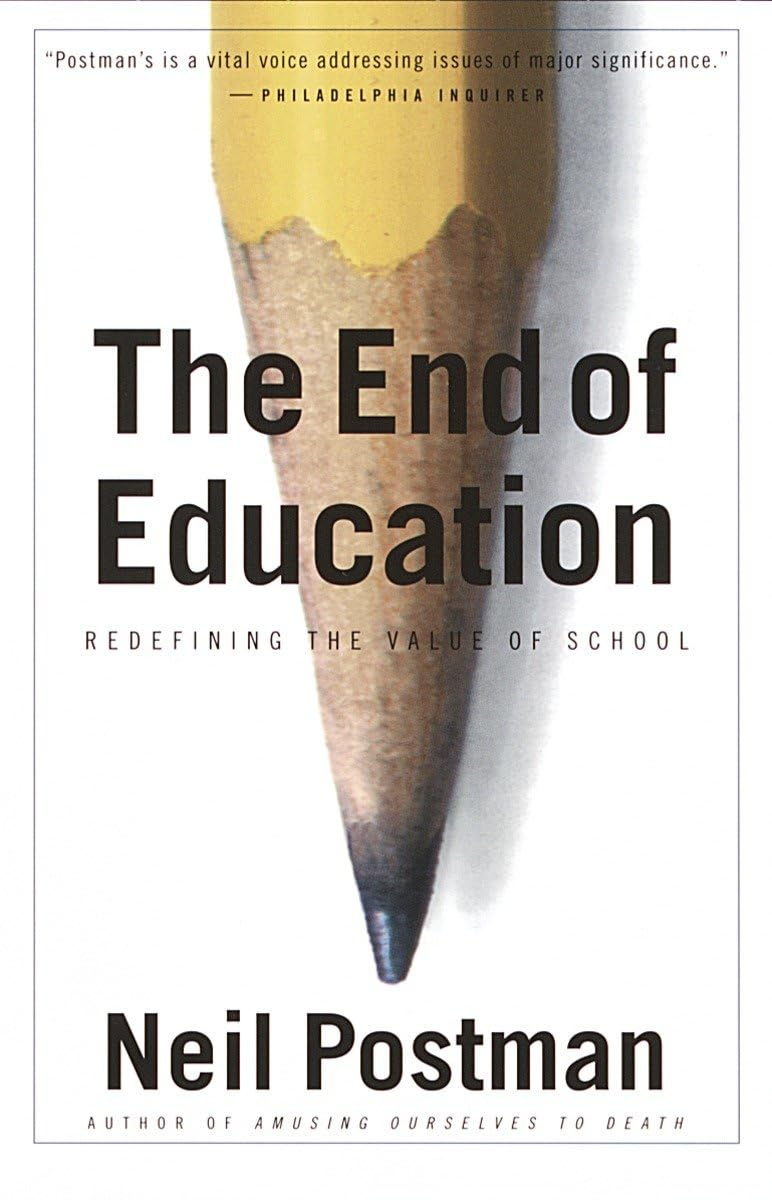

I like this analogy between different kinds of rendering and education. As a counterpoint to speedrunning education though, I'll note something Jean Piaget observed, which I think about all the time. When Piaget gave talks in the US, he inevitably got questions about how to speed up a child's progression through stages of cognitive development. He found the question baffling and thought education shouldn't or couldn't be sped up. He called this "the American question." He was talking about early childhood education, and I think it might be different in college, and certainly for adult learners. But as a parent and educator, I think often about Piaget's perspective and what American assumptions about efficiency that I bring to the value of education.
Thanks for mentioning my work! :)
I cannot help but think that speedrunning education with AI boost is yet another great example of this JPEG progressive rendering phenomenon that you described, and as evidenced by others here, we are likely surrounded by many more scenarios. The one I had in mind was language learning... at any age. My own journey of learning English as my first language was hard enough (Chinese at home but not taught, English at school but no friends). A sense of progression is what kept me in the game so that by the 4th grade, I was no longer self-conscious about not being able to read since I could by then (what a progression that was, especially since I never let on to anyone that I did not know how to read). My 6th grade teacher (whom everyone hated) taught in such a way that I learned to love the structure and usefulness of language, and therefore continued from then on to keep building my knowledge of the language far beyond formal school. Now I'm going through a similar process, though now in my 60s, with Japanese. The only meaningful progress I've made in 12 years has happened because I stopped expecting myself to know and speak everything perfectly and instead clung to the few important nuggets that I needed for real conversation. With only just those few basics under my belt (and wow, that took forever to develop), I am finding it ever so much easier each week in my online class to add more and more detail (words, grammar, idioms et al) to the picture, and every now and then, I'm surprised that I remember the new details enough to use them in a pinch. Japanese Progression Exceptionally Gradual... JPEG!